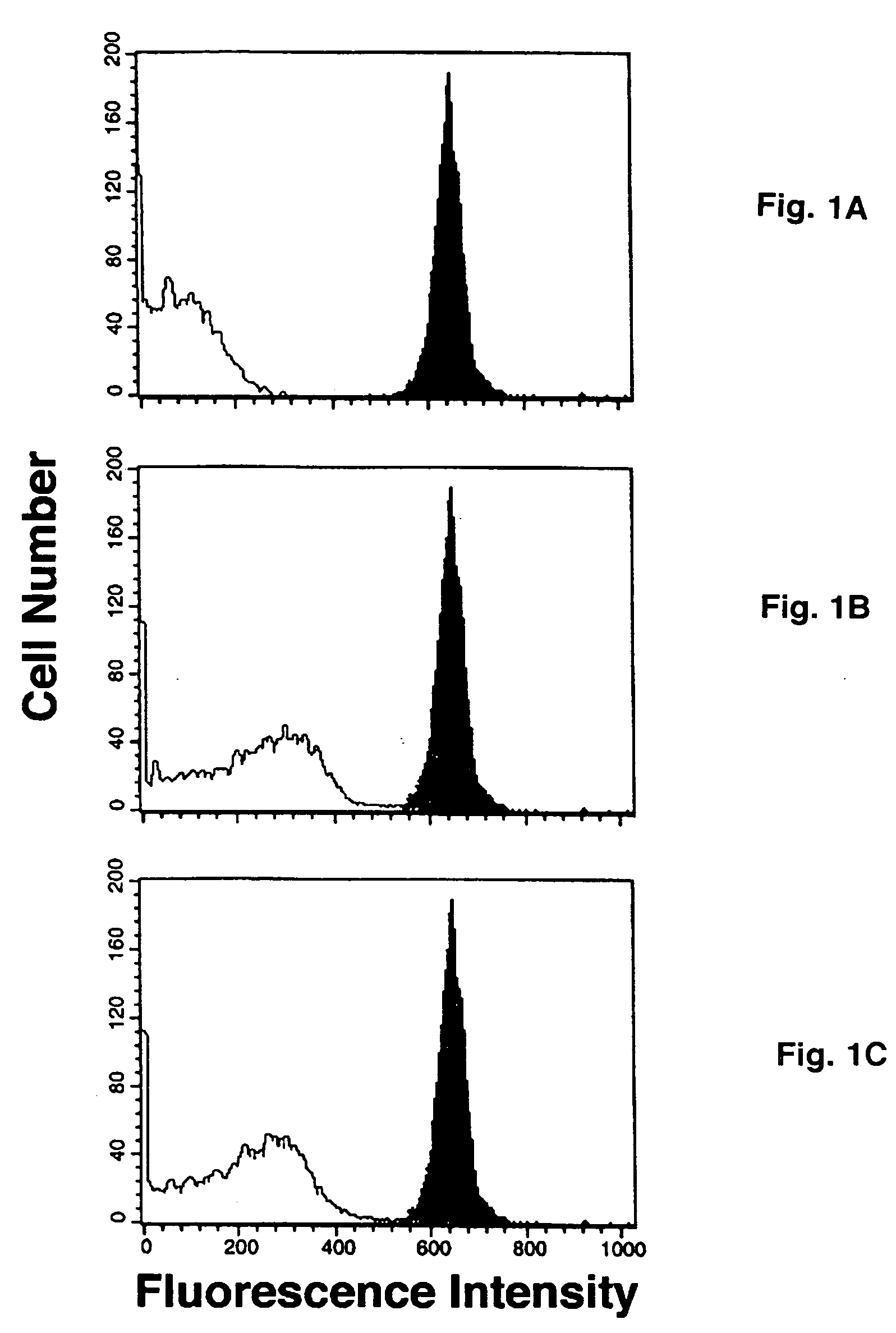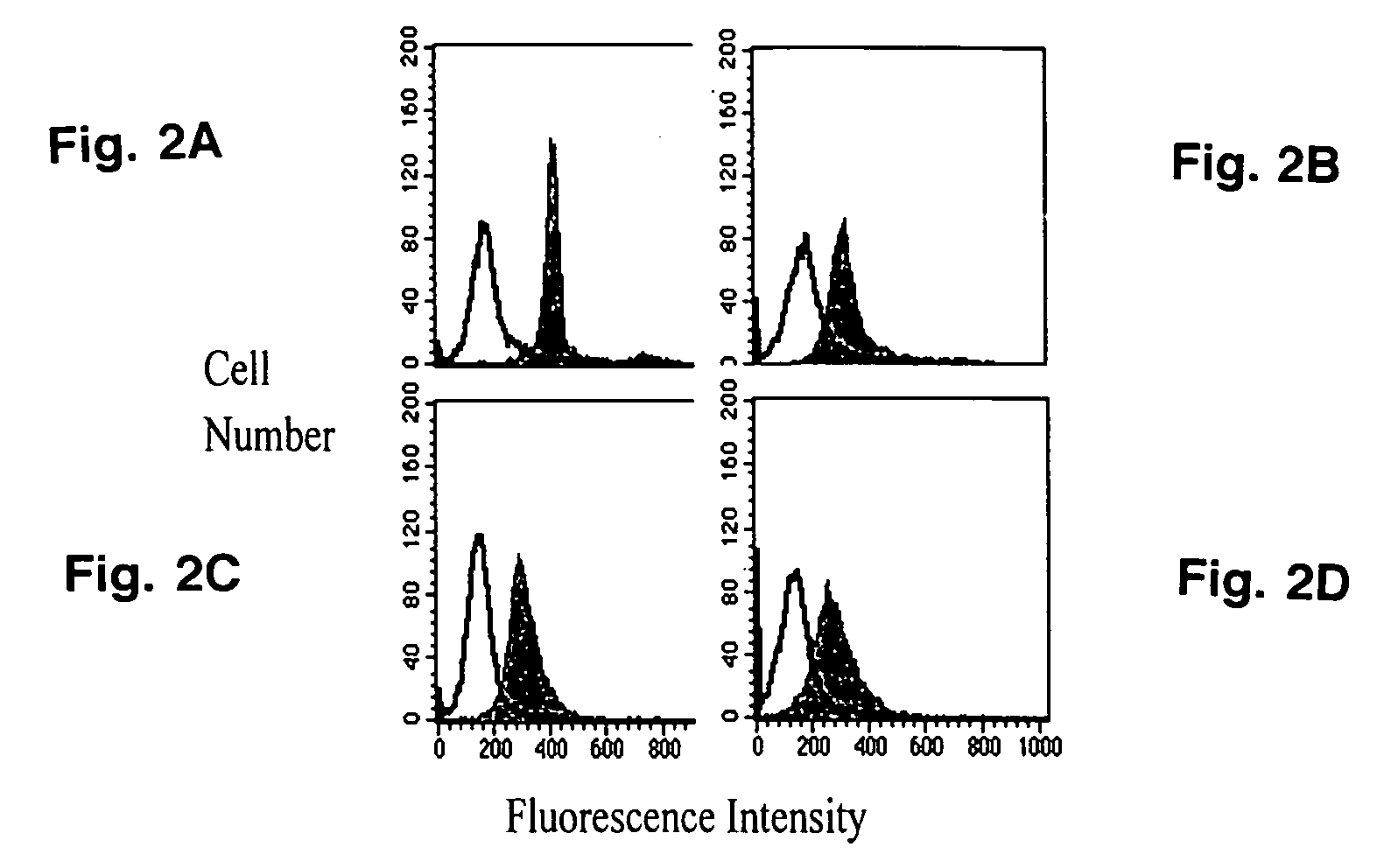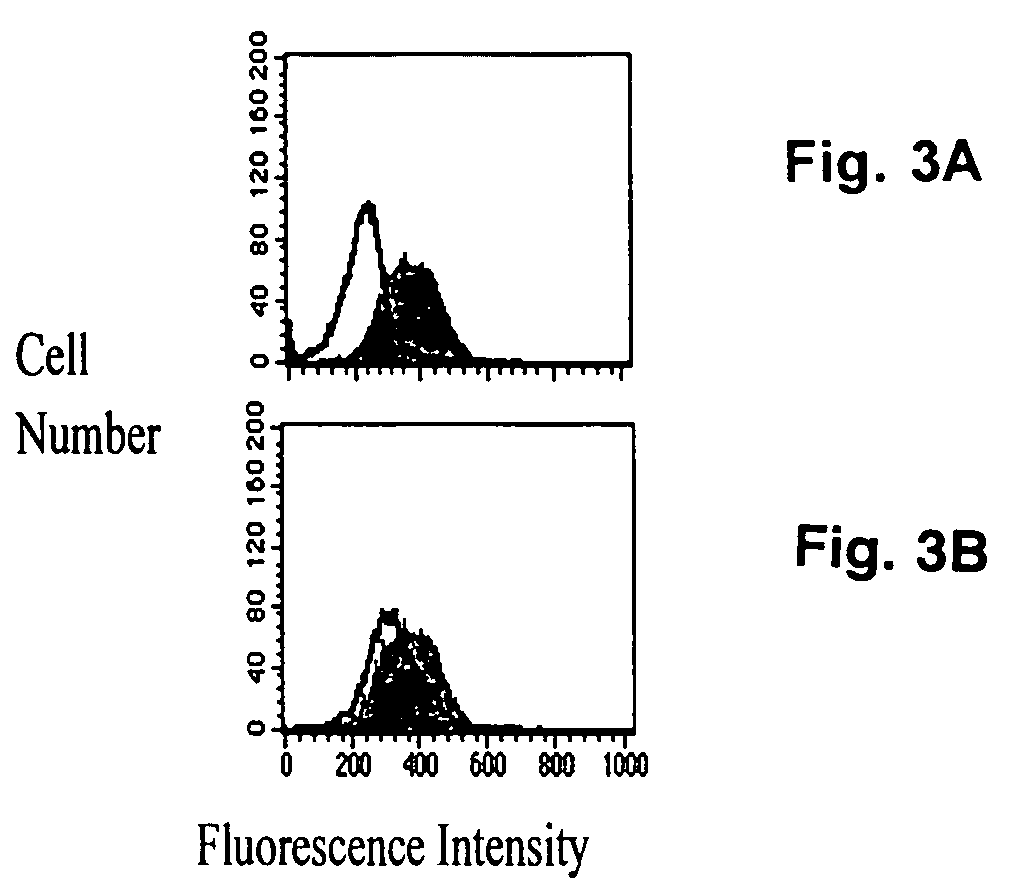Method of treating inflammation with inhibitors of sialyl transferases
a technology of sialyl transferase and inhibitors, which is applied in the field of inhibitors of sialyl transferase, can solve the problems of inability to inhibit prior art is deficient in methods of inhibiting the activity of sialyl transferase to reduce the ability, and the success of the inhibitory effect is not very good
- Summary
- Abstract
- Description
- Claims
- Application Information
AI Technical Summary
Benefits of technology
Problems solved by technology
Method used
Image
Examples
example 1
Materials and Methods
Cell Preparation
[0053] Human red blood cells (RBCs) were obtained from the peripheral blood of healthy volunteers by venipuncture under a protocol approved by the Institutional Review Board (IRB). Sterile and defibrinated sheep red blood cells (SRBC) were purchased from Waltz Farm (Smithsburg, Md.) and stored at 4° C. polymorphonuclear leukocytes were processed from the peripheral blood of healthy human donors as previously described (3) under the same IRB-approved protocol.
Reagents
[0054] Type-5 neuraminidase (Clostridium perfringens), 2,3 deoxy-N-acetyl neuraminic acid (2-DN) and cytidine 5′-monophosphate (CMP) were purchased from Sigma (St. Louis, Mo.). CMP-5-fluoresceinyl-neuraminic acid (CMP-5-NANA) was purchased from (Calbiochem, San Diego, Calif.). Alpha 2,6 sialyltransferase (a 2,6 ST) was purchased from Genzyme (Cambridge, Mass.) and protease inhibitor cocktail tablets were purchased from Roche (Indianapolis, Ind.).
[0055]...
example 2
Exogenous ST Transfers Sialyl Residues onto Sheep RBCs
[0059] In preliminary experiments it was established that neuraminidase treatment prepared the surface of both human and sheep RBCs for the comparable acceptance of ST-mediated transfer of CMP-5-NANA (data not shown). The complete mixture of sheep red blood cells, CMP-5-NANA and exogenous ST resulted in a strong signal on flow cytometry (FIGS. 1A-1C, dark peaks). Omission of either CMP-5-NANA, i.e., autofluorescence, (FIG. 1A, grey peak) or exogenous ST (FIG. 1B, grey peak) or use of heat-inactivated ST (FIG. 1C, grey peak) from the reaction mixture markedly reduced the signal. In the absence of neuraminidase pretreatment, sheep red blood cells displayed no fluorescent signal, i.e., sheep red blood cells were unable to act as an acceptor for the labeled CMP-NANA.
example 3
Intact PMNs Both as ST Source and as Sialyl Residue Acceptors
[0060] Since RBCs were capable of accepting sialyl residues, it was contemplated whether intact human polymorphonuclear leukocytes might also function as sialyl residue acceptors in the presence of exogenous (bacterial) ST activity. Exogenous ST mediated the transfer of CMP-5-NANA onto polymorphonuclear leukocytes that had been pretreated with neuraminidase (FIG. 2A, solid peak). There was an increase in the ability of polymorphonuclear leukocytes to accept sialyl residues with increasing doses of neuraminidase pretreatment until a plateau was attained at 30 mU neuraminidase / ml (data not shown). This ST activity was inhibited by CMP (open peak). Exogenous ST also mediated CMP-5-NANA transfer to polymorphonuclear leukocytes without prior neuraminidase treatment, but here the effect was diminished (FIG. 2B). Thus, even in the absence of neuraminidase pretreatment, sialyl residue acceptor sites were available on intact huma...
PUM
| Property | Measurement | Unit |
|---|---|---|
| Composition | aaaaa | aaaaa |
| Fluorescence | aaaaa | aaaaa |
Abstract
Description
Claims
Application Information
 Login to View More
Login to View More - R&D
- Intellectual Property
- Life Sciences
- Materials
- Tech Scout
- Unparalleled Data Quality
- Higher Quality Content
- 60% Fewer Hallucinations
Browse by: Latest US Patents, China's latest patents, Technical Efficacy Thesaurus, Application Domain, Technology Topic, Popular Technical Reports.
© 2025 PatSnap. All rights reserved.Legal|Privacy policy|Modern Slavery Act Transparency Statement|Sitemap|About US| Contact US: help@patsnap.com



